Today we’re speaking with Solgrim, a South Korean tattoo artist whose bold and organic designs have captured the attention of tattoo lovers around the globe.
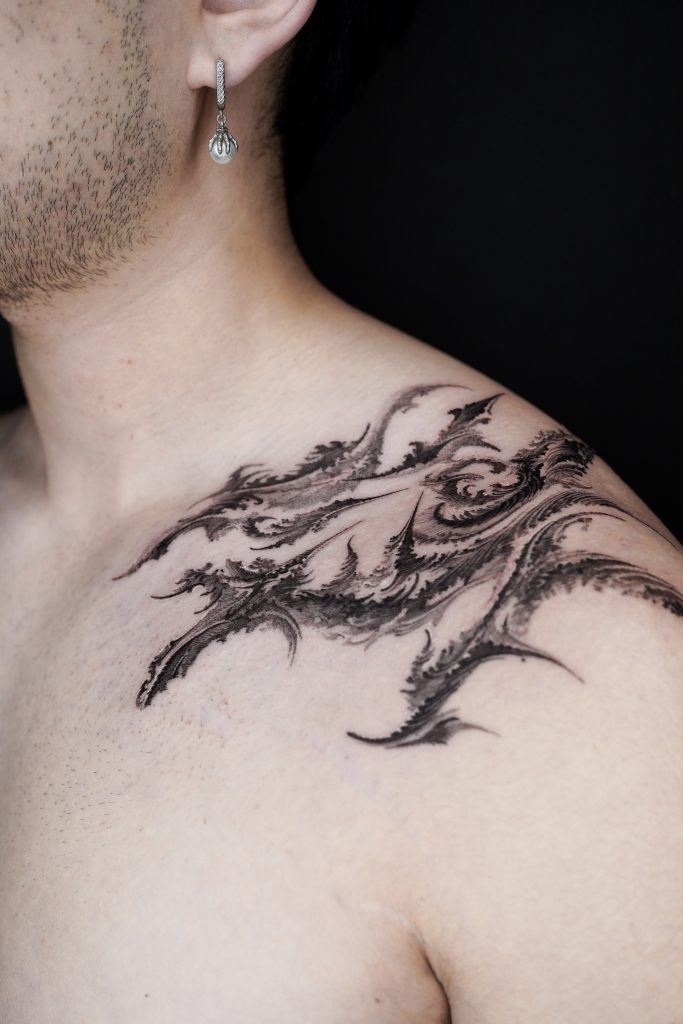
Currently based in Los Angeles, Sol is part of the cutting-edge nonfromseoul art collective, where his unmistakable style continues to evolve. He frequently returns to Seoul and travels internationally for guest spots, sharing his art with a growing global audience.

Solgrim’s tattoos are immediately recognizable: spiked with thorn-like motifs, flowing with ornamental energy, and often executed freehand. He works primarily in black and grey, occasionally introducing touches of red to add contrast and emotional weight. The result is a body of work that feels both ancient and futuristic, refined yet raw. I personally love how his aesthetic seems to live in motion across the skin.
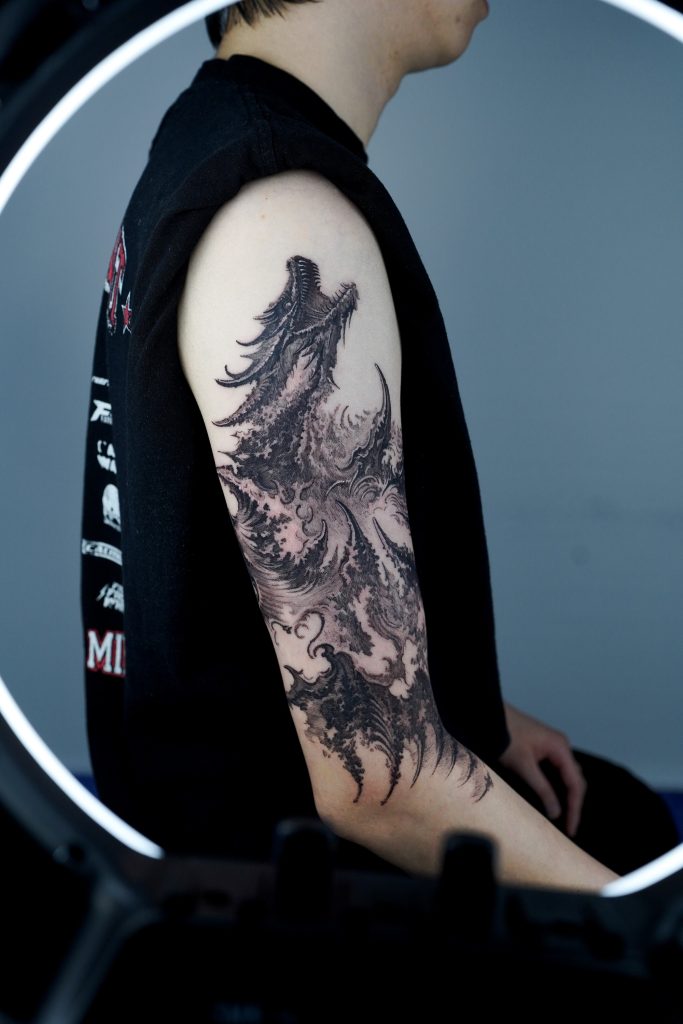
Even when tattooing creatures, animals, or abstract symbols, Solgrim brings a distinctive touch that merges organic movement with sharp and often symbolic edges. His pieces pulse with a unique sense of rhythm, always adapting to the shape and flow of the body they adorn. It’s a style that feels less like a design and more like it became part of the skin.
With a steadily growing fan base of over 16,000 followers on Instagram, Solgrim is quickly becoming one of the most intriguing names in contemporary tattooing. If you haven’t yet seen his work, head over to @solgrim_ and you’ll know his style the moment you see it.

Your work is incredibly recognizable. How would you describe your style to someone who has never seen your tattoos before?
I’d say my style is intuitive and anatomical. I work with the body, not on it. My work flows with each person’s muscles and energy—almost like sculpting with light and shadow. It’s the culmination of my experiences and intuition.
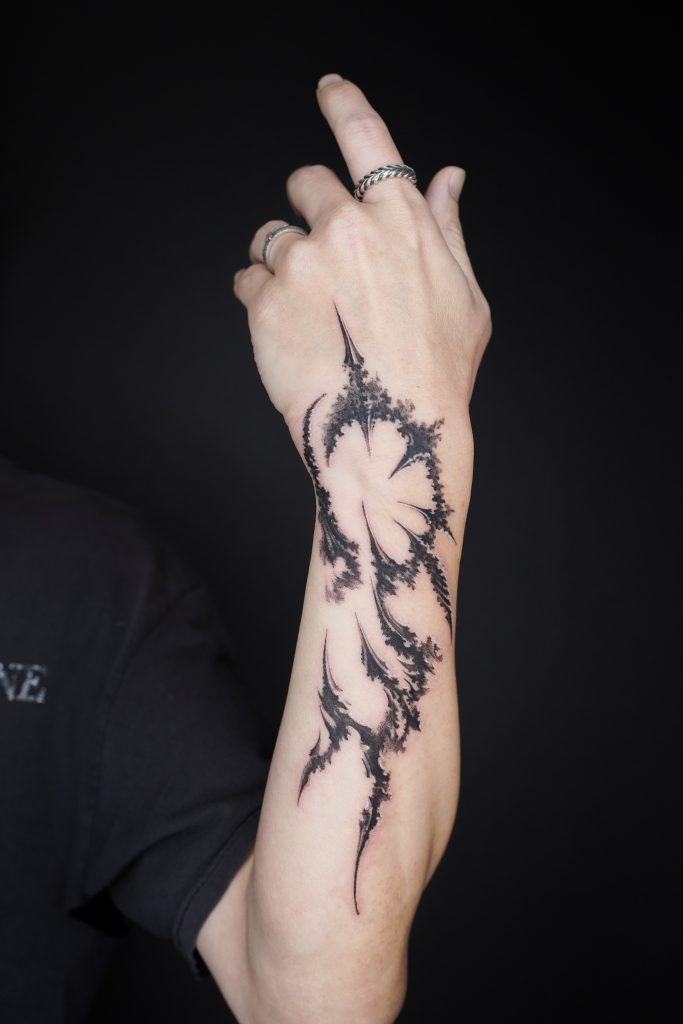
You often work freehand, which is rare and bold. What’s the process like for creating a freehand tattoo on the spot?
I do almost all of my work freehand. I begin by observing the body’s rhythm—its bone structure, muscle flow, and tension lines. Then I sketch directly onto the skin with markers. It’s a conversation between the form and my intuition.

There’s a strong flow in your tattoos as they seem to move with the body. How do you approach the composition to achieve that ornamented effect?
I feel like composition is one of the most important things in visual art. I treat the body as a three-dimensional sculpture. I consider how the viewer’s eye will move around curves, how negative space balances detail, and how tension builds and resolves along the form.
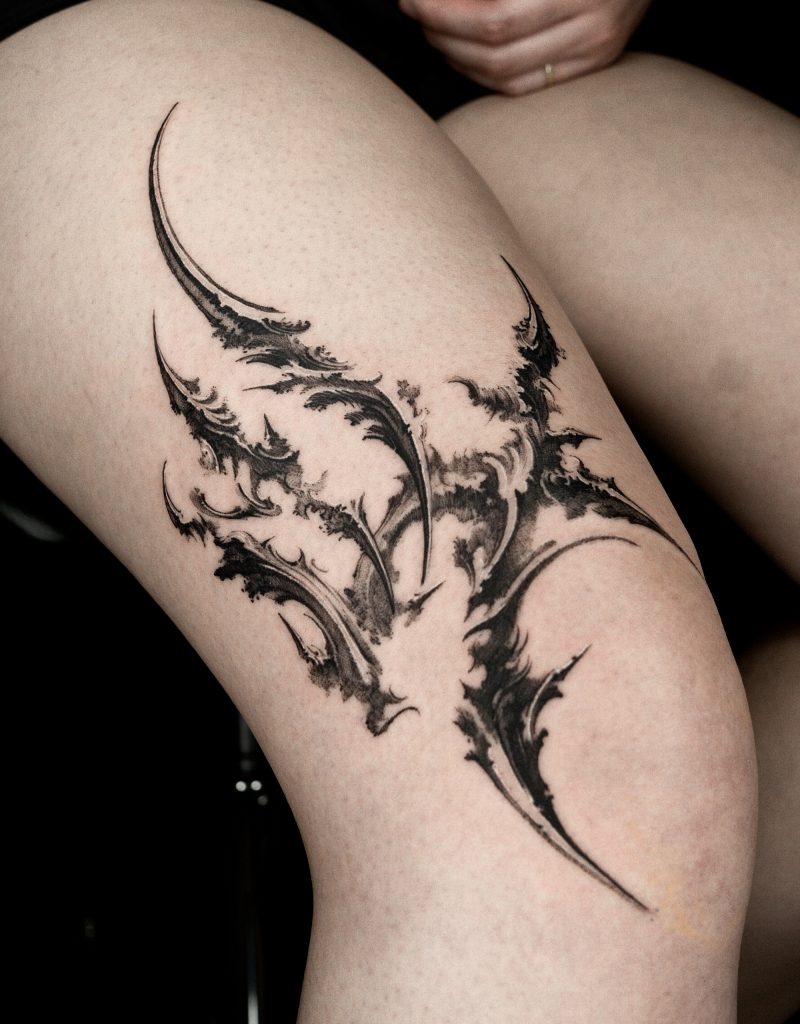
You travel frequently, especially between South Korea and the USA. How do these different environments shape your creativity?
Korea taught me discipline and subtlety. The U.S. taught me expansion and risk—and collaboration. I draw from both—precision from one, boldness from the other.

Do you have any rituals or personal habits that help you stay creative and focused while tattooing?
I almost always wear a headset while working. Listening to e-books related to philosophy and psychology has become a routine. Recently, I’ve been reading about Stoicism, behavioral economics, and Nietzsche. These routines help me fully immerse myself when I begin a session.
Is there a tattoo you’ve done that felt especially meaningful to you?
There are many, but the most meaningful ones are when the client fully trusts me. I once met a client in LA named Yong, which means “dragon” in Korean. He wanted to propose to his girlfriend, whose name meant “butterfly.” I tattooed a flow of a dragon embracing a butterfly on his arm. I think it stayed with me, especially since I’ve been reflecting a lot on love lately.
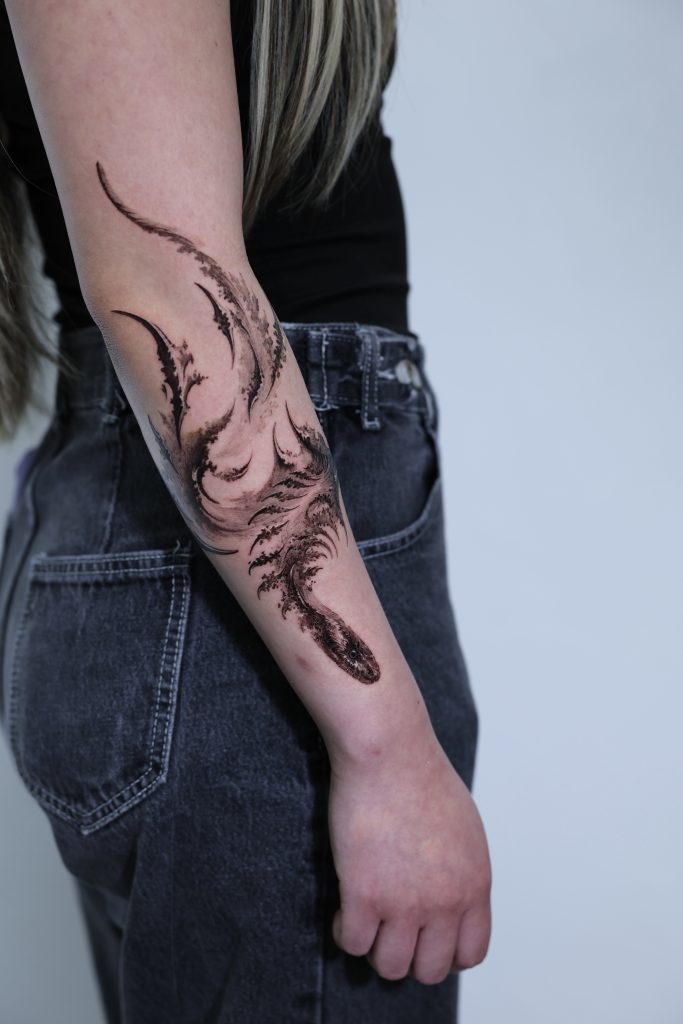
What has been one of the most challenging pieces you’ve ever worked on?
It’s most difficult when a client’s understanding of visual balance differs greatly from mine and they come with a long list of demands. However, because my style is consistent, most of my clients share a similar sense of aesthetics, which usually makes the work smoother.
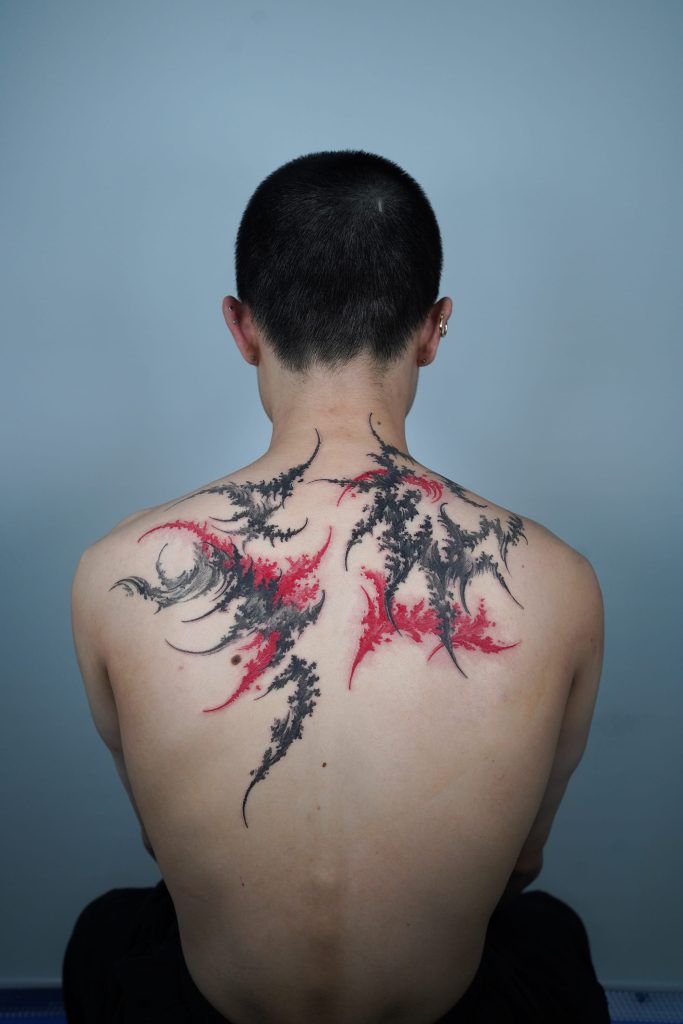
How does your style blend with other tattoos clients might already have nearby?
When working with clients who already have tattoos, I analyze the flow of each existing piece. I then design in a way that harmonizes best with the area they want tattooed, considering the relationship between the two.

What type of tattoo work or style do you consider most aesthetic?
Anything that respects the body’s structure and doesn’t just sit on top of it. Even minimal work, when placed well, is powerful.

Looking ahead, what are some personal goals or dream projects you’d love to work on in the coming years?
I want to integrate my tattoo work more fully into my brand ivheim—combining it with objects, scent, sound, and space. Eventually, I’d like to open a permanent space where people can experience the full atmosphere, not just the ink.
Thank you, Solgrim, for sharing your thoughtful perspective and creative journey with us. Your work truly embodies a rare fusion of intuition, movement, and meaning. To see more of Solgrim’s powerful and evolving style, follow him on Instagram at @solgrim_.

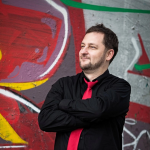

No Comment! Be the first one.